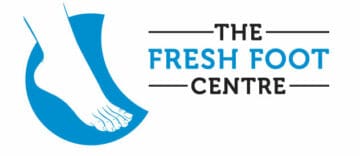Caused by abnormal pressure, corns and callus are areas of thickened skin. Consistent pressure causes the skin to thicken as a form of protection and compensation. This, in return, causes the formation of a callus or localised corn. Corns are circular and deep. The texture of the skin is solid and tough. If not treated immediately, the skin under may ulcerate which will require extensive and urgent podiatry treatment and wound care.
Important note: For persons with diabetes, it is best to have their corns and callus treated immediately to prevent ulcerations.
A callus is an area of hard thickened skin on the foot that is formed in response to pressure or friction. When pressure is concentrated in a small area, a corn, which has a central core, may develop. If the pressure is not relieved, calluses and corns can become painful.
Corns and calluses often develop on the ball of the foot, under the big toe, tips of toes, and any bony prominence. ‘Soft’ corns may develop between the toes, where the skin is moist from sweat or inadequate drying. Sometimes, the pressure of the corn or callus may produce inflammation, which can result in pain, swelling and redness.
The symptoms may include:
- Thickened patch of hard skin on the foot
- Hard, small bump of skin with a central core
- White and rubbery bumps of skin (‘soft’ corns)
- Pain when pressure or friction is applied to the area.
The causes of corn or callus can be the following:
- Too tight or too lose footwear
- Deformities in the toes such as hammer toes and bunions which increases the pressure in the toes
- Biomechanical or gait abnormalities that cause more pressure on the soles of the feet.
Treatment
If you have corns or calluses or you feel you they are gradually forming on your feet, see your podiatrist for treatment.
Options may include:
- Identifying and removing the possible cause of friction and pressure
- Professional reduction of the callus or corn to relieve pain
- Customised padding to redistribute pressure
- If needed, permanent shoe inserts (orthoses) to offer long-term pressure relief
- Advice on appropriate footwear
- Advice on appropriate foot care, such as applying moisturiser daily.
Don’t try to treat corns and calluses yourself. The body protects skin tissues from pressure or friction damage by producing an area of hard skin so, unless the cause of the pressure or friction is found and removed, calluses and corns will continue to form. Over-the-counter treatments, such as corn plasters, can damage the healthy surrounding skin if used incorrectly. Don’t ever attempt to cut away or scrape a callus as there is a risk of infection if you accidentally cut yourself. Never attempt “at home” surgery as cutting deeply or gouging at the centre of a corn can damage healthy tissue, nerves and/or blood vessels. The end result may be infection or scarring.
Corn removers and chemical products for corn removal are a popular choice for removing corns. However, it may injure and damage good skin that lies underneath or at the side. We do not recommend them.
Seek advice from our podiatrists regarding the most appropriate treatment for you. The podiatrists at The Fresh Foot Centre are highly trained to remove your corns and callus using a simple, pain-free, and secure procedure. Our podiatrists use sterile instruments for corn removal. On your appointment, they will also assess and address the cause of the callus and corn to prevent it from coming back.


